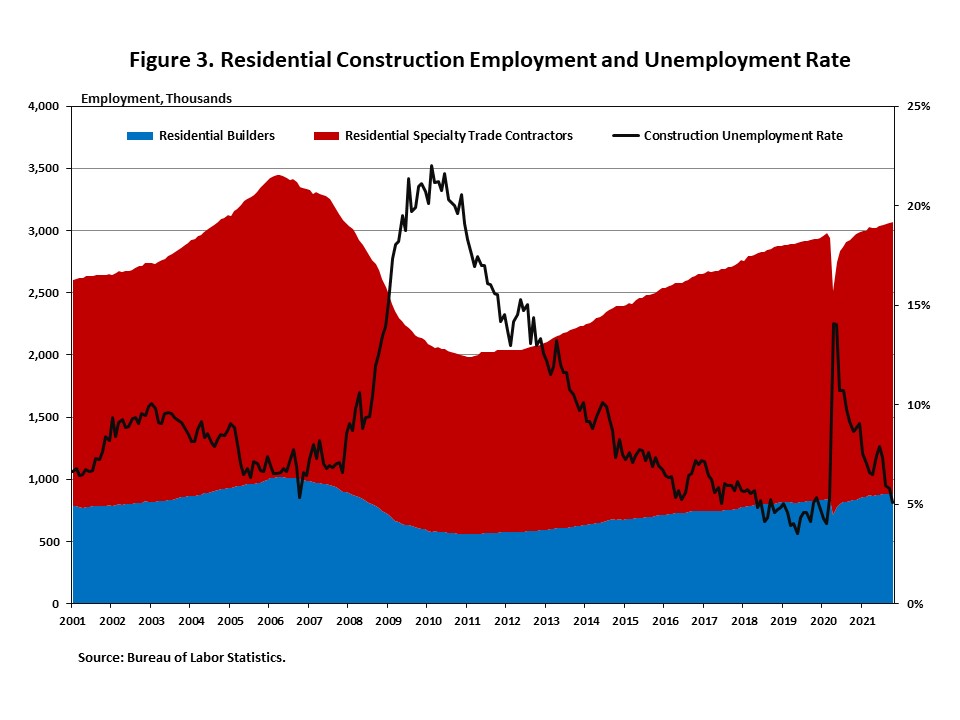Chart: Residential Construction Employment Has 'Recovered'
Originally Published by: NAHB — November 5, 2021
SBCA appreciates your input; please email us if you have any comments or corrections to this article.
Job gains picked up in October after two consecutive months of a slowdown. Total payroll employment rose by 531,000 and the unemployment rate dropped to 4.6% in October.
Construction industry employment (both residential and non-residential) totaled 7.5 million, with 44,000 construction jobs added in October. Both residential construction (+10,900) and non-residential construction (+33,000) had job gains for the month. Residential construction employment exceeds its level in February 2020, while 63% of nonresidential construction jobs lost in March and April have been recovered.

Total nonfarm payroll employment increased by 531,000 in October, faster than the previous two months, as reported in the Employment Situation Summary. Job gains for August and September were revised upward. The August increase was revised up by 117,000, while the September increase was revised up by 118,000 from +194,000 to +312,000.
Over 5.8 million jobs have been created during the first ten months of 2021 and monthly employment growth has averaged 582,000 per month. Total nonfarm employment in October 2021 is still 4.2 million lower than its pre-pandemic level in February 2020 level.
Meanwhile, the unemployment rate declined by 0.2 percentage points to 4.6% in October, the lowest rate since the pandemic. It was 10.2 percentage points lower than its recent high of 14.8% in April 2020 and 1.1 percentage points higher than the rate in February 2020. The October decrease in the unemployment rate reflected a decrease in the number of persons unemployed (-255,000) and an increase in the number of persons employed (359,000). The labor force participation rate, the proportion of the population either looking for a job or already with a job, remained unchanged at 61.6% in October.
Job gains in October were widespread. Leisure and hospitality, professional and business services, education and health services, manufacturing, transportation and warehousing, and construction all had notable job gains in October, while employments in local government education, and in state government education have declined for the second consecutive month.

Employment in the overall construction sector rose by 44,000 in October. Over the month, residential construction added 10,900 jobs, and nonresidential construction employment rose by 33,000 jobs.
Residential construction employment now stands at 3.1 million in October, broken down as 885,000 builders and 2.2 million residential specialty trade contractors. The 6-month moving average of job gains for residential construction was 8,917 a month. Over the last 12 months, home builders and remodelers added 122,800 jobs on a net basis. Since the low point following the Great Recession, residential construction has gained 1,087,600 positions.
In October, the unemployment rate for construction workers declined by 0.7 percentage points to 5.1% on a seasonally adjusted basis. The unemployment rate for construction workers has been trending lower, after reaching 14.1% in April 2020, due to the housing demand impact of the COVID-19 pandemic.

